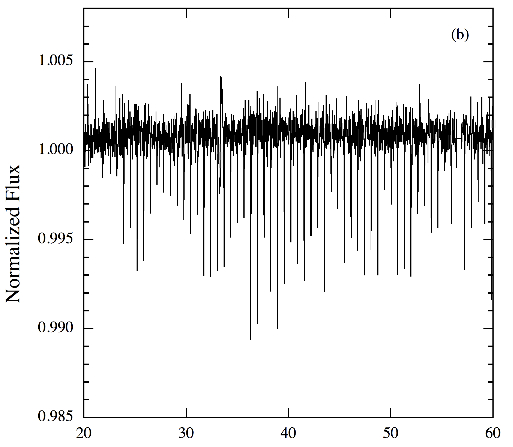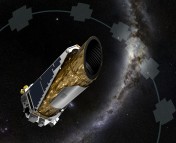Title: Possible Disintegrating Short-period Super-Mercury Orbiting KIC 12557548
Authors: S. Rappaport, A. Levine, E. Chiang, I. El Mellah, J. Jenkins, B. Kalomeni, M. Kotson, L. Nelson, L. Rousseau-Nepton, K. Tran
First author’s institution: MIT Department of Physics
Finding Treasures in the Kepler Data
The Kepler Space Telescope has provided a wealth of incredibly precise photometry, used to discover thousands of planet candidates and dozens of confirmed planets. The Kepler Science Team has done much of this work, but many other teams are also looking through the public Kepler data with very different analysis tools, looking for other interesting objects that the proprietary Kepler pipeline would never find.
The Puzzle of KIC 12557548
Such a team, located at MIT and led by Rappaport, found a very puzzling object while looking for eclipsing binary stars in the Kepler data. They found this object while looking for periodic signals in the data using a Fourier analysis. The signal looks like a transit—a periodic dip in light when the planet orbits in front of the star—but unlike a normal planetary transit, the depth of the transit varies considerably from transit to transit. In fact, it varies from less than 0.15% to over 1.2%!

Figure 1: This figure shows the flux from the star as a function of time (x-axis is in days). Note that the transit depth varies considerably from transit to transit.
Several different physical scenarios could result in variable transit depths. For example, in a system with two giant planets, one might transit at a grazing angle (just crossing the edge of the star); if the other planet perturbs the transiting planet gravitationally, it could cause the planet to transit at a slightly different angle with each orbit and thus cover a different fraction of the starlight. However, this type of process would cause the transit depths to vary with a distinctive, repeating pattern, and that periodicity is not observed here.
A Disintegrating Super-Mercury
The most promising scenario discussed is that a very small rocky planet—close to the size of Mercury—is evaporating as it orbits the host star. The putative planet orbits the star in less than 16 hours, so the planet’s surface is highly irradiated. The planet would actually be hot enough to vaporize rocky material at the surface, which could escape the gravitational pull of the planet and form a comet-like tail trailing the orbit (see Figure 2a).

a) Shows a simulation of the rocky comet-like tail trailing behind the planet. The density is shown by the color gradient. b) Shows the phase-folded light curve of the transit. Note the small increase in flux just prior to transit and the slower-than-normal increase in flux just after the transit.
This situation would explain another odd feature of the observed transit light curve; the data show that the light from the star increases very slightly just before transit and increases more slowly than one would expect after transit (see Figure 2b). The pre-transit increase could be due to the preferential forward-scattering of the starlight by the dusty material being lost from the planet. The slow post-transit increase could be because part of the comet-like tail is still obscuring some of the starlight.





Trackbacks/Pingbacks